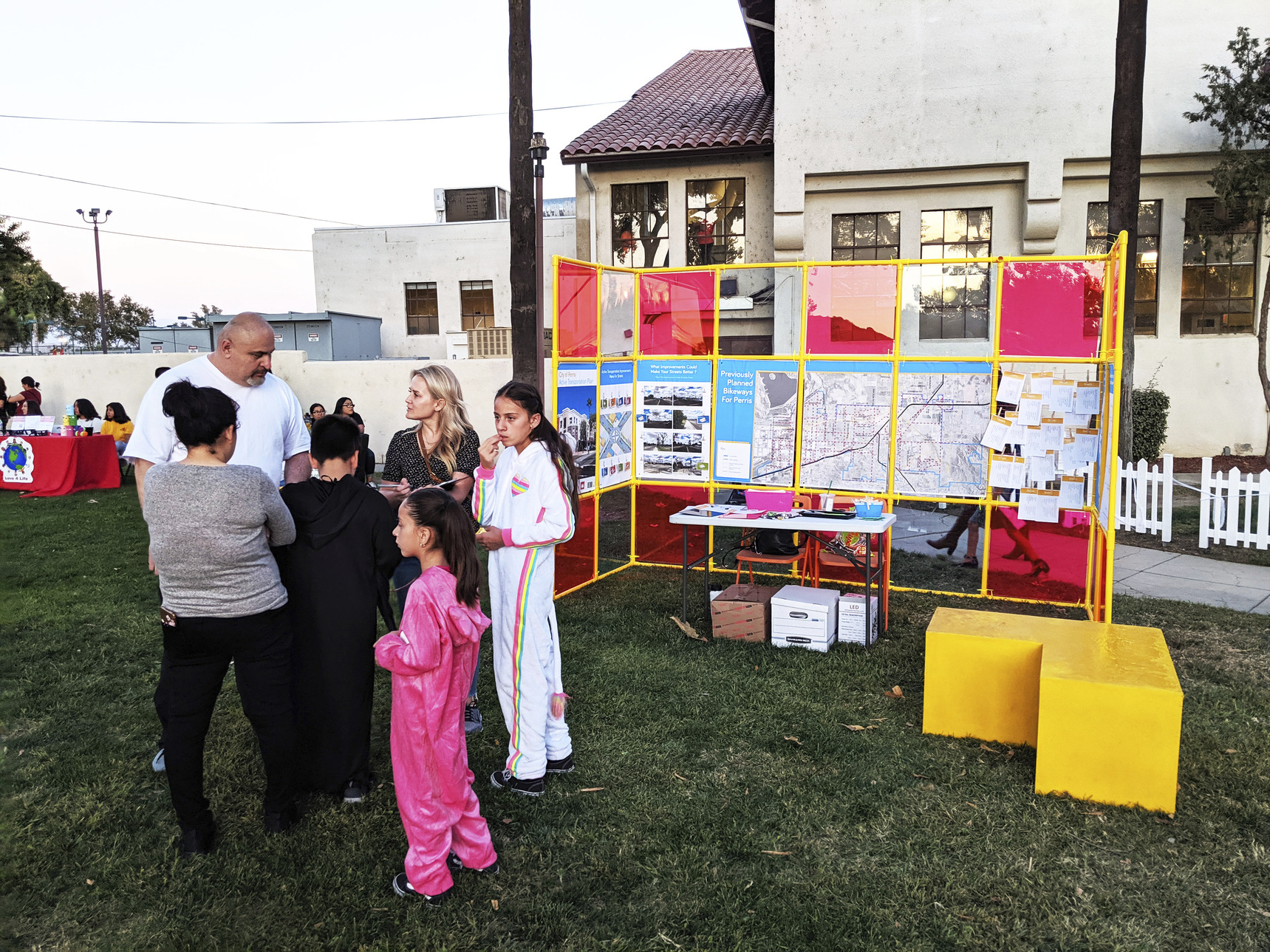Studio One Eleven was recently honored by the Los Angeles and Inland Empire Chapters of the American Planning Association (APA) with three awards for our urban design projects. We were recognized for impactful projects that are focused on contributing to a better quality of life in the communities they are in.
APA Los Angeles recognized us with an excellence award in the Best Practices category for our Pacific/Randolph and Florence/Salt Lake Station Area Plans in Huntington Park, created in partnership with the Los Angeles Neighborhood Initiative (LANI) and Smart Growth America. The Best Practices award focuses on demonstrating how innovative and state-of-the-art planning methods and practices help to create communities of lasting value. The awarded plan is a robust example of community-focused, equitable transit-oriented development. It includes land use and zoning guidance for the station area cities to further compact and walkable neighborhoods around new transit, but also focuses on programs and policies to anchor neighborhood growth and change in principles of equitable development that will uplift the existing residents and legacy or community-owned businesses, and protect them from displacement.

Studio One Eleven also received a Merit award in the Hard-Won Victories category for our Downtown Mar Vista Beautification Project in partnership with LANI and Los Angeles Council District 11. This award focuses on a planning effort undertaken by professional planners and the community in the face of difficult circumstances. Our project focused on placemaking improvements along Venice Boulevard in Downtown Mar Vista to support existing businesses, create more amenities for visitors, and enhance the identity of Downtown Mar Vista.
Studio One Eleven also received a Merit award in the Hard-Won Victories category for our Downtown Mar Vista Beautification Project in partnership with LANI and Los Angeles Council District 11. This award focuses on a planning effort undertaken by professional planners and the community in the face of difficult circumstances. Our project focused on placemaking improvements along Venice Boulevard in Downtown Mar Vista to support existing businesses, create more amenities for visitors, and enhance the identity of Downtown Mar Vista.
Placemaking improvements included new outdoor furnishings for businesses, mural art created by local artists, landscape planter pots and identity signage for the street. They were identified through diverse community input that was received through rigorous community outreach. Some of the key challenges that required persistence from the project team to successfully create an impactful project included the difficulty of conducting meaningful outreach during the COVID 19 pandemic, as well as the ongoing issue of homeless in Mar Vista that was the primary focus of concerns for residents and community members.
The project team used a variety of tools to address these issues. For outreach, the team combined nimble methods of in-person engagement at local events that continued to function safely during the pandemic such as the outdoor farmers’ market, with the wide reach of tools like online surveys and webinar town-hall meetings to solicit broader input. In response to concerns over the homelessness crisis and mainteance of public realm improvements, the team also proposed placemaking solutions that were designed to limit vandalism and could be effectively maintained by partnerships with local businesses.

Lastly, we were part of a comprehensive team that received an APA Inland Empire Excellence Award in the Best Practices category, for our project- SCAG’s Disadvantaged Communities Active Transportation Planning Initiative. As Outreach Lead, Studio One Eleven developed creative outreach methods to solicit input that shaped the Active Transportation Plans for six disadvantaged communities within the SCAG region.
Our customized hands-on collaborative engagement strategies were educational opportunities for community stakeholders about active transportation infrastructure improvements and were also used to solicit feedback on what improvements the communities needed and where they would be most effective. Creative outreach techniques were employed through all stages, including an eye-catching artistic pop-up installation at in-person engagement events, and multi-lingual virtual ‘Open House’ webinars that were adapted for safe engagement during the COVID 19 pandemic.
Partnerships with local community-based organizations to do door-to-door outreach and create physical hubs for virtual meetings enabled our team to reach a broad community audience through virtual channels, even in communities that lacked access to technology or resources to participate in virtual meeting formats.